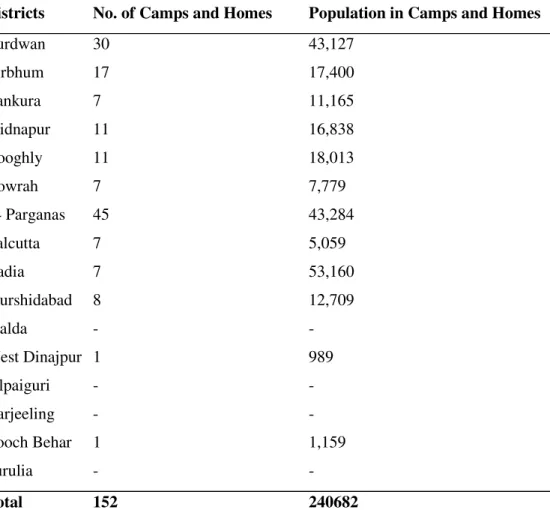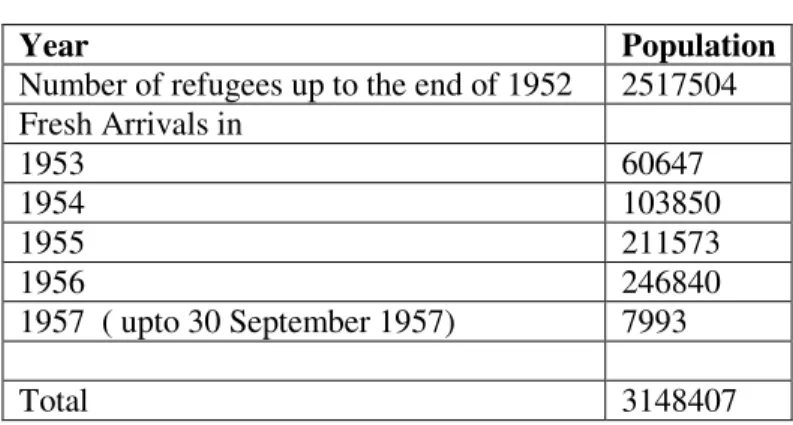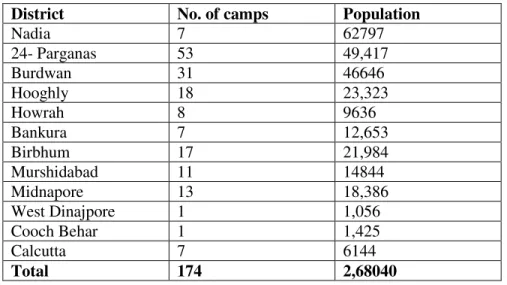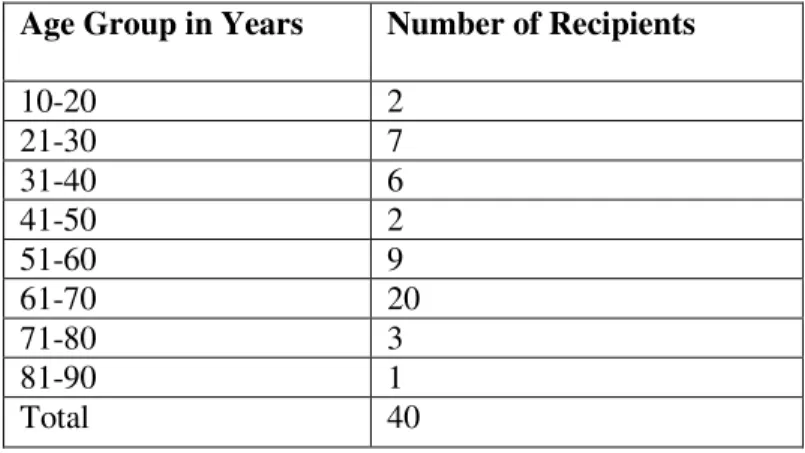In the first section, we shall deal with the genesis of the camps after the partition in 1947 in West Bengal. The annual report of the Department of Rehabilitation of the Government of India pointed out that in the first phase of the refugee flow between 1946 and millions of refugees arrived in West Bengal. Nevertheless, they are important for understanding the extent and magnitude of post-Partition displacement in the East.
Nevertheless, the second five-year plan provided 187 million rupees for the rehabilitation of refugees. In a way, the social network system of these displaced persons played an important role in the reconstruction of their lives on the other side of the border. The Politics of Upheaval: The Politics of Camp Rehabilitation in Post-Partition West Bengal.
It is quite clear that the government did not have a carefully thought out plan for the rehabilitation of the poor camp refugees in West Bengal at the initial stage. Accordingly, he was directed to accept the responsibility of rehabilitating the inmates of West Bengal. Gradually, the resentment of the campers in West Bengal prompted them to raise their voices.
But UCRC's activities in the initial phase remained mostly confined to squatter colonies.
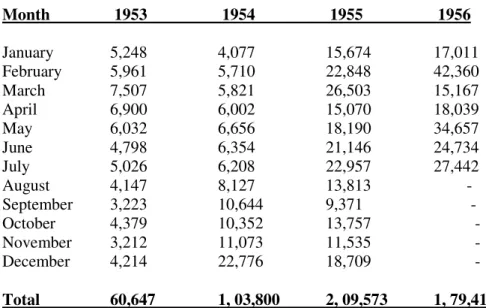
On the Margins of Citizenship
Cooper’s Camp, Nadia
Ishita Dey
Map 1: Site Plan of Ranaghat Women’s Home and Cooper’s Camp Rehabilitation Scheme
- Cooper’s Agricultural Scheme
One of the main demands of the refugee movement was to recognize Cooper's as an industrial colony and the then Chief Minister of West Bengal, B.C. One of the mistakes of the refugee movement I feel was our decision on rehabilitation in Dandakaranya and Nainital. It was reported that the residents of Cooper's camp felt unsafe due to various wild animals.
The location of the "women's camp" of Ranaghat is interesting and as one of the government officials of the Cooper Camp Home of Permanent Responsibility puts it. The Camp Cooper Permanent Charge House official introduced me to my informant and guide. As the government official described his first meeting with the residents of the "Women's Camp", I was surprised.
One of the criticisms of refugee studies has been the demographic numbers and changing growth patterns. In this context, the importance of the role of the "subject" in the refugee care discourse needs to be addressed, because it is "the subject who moves, who makes the movement" (Samaddar in Bose (ed. When Bimala Das introduced me to Kanaka Das, another resident in the women's camp, she was getting ready to make her lunch.
We are the garbage of the state that once lent a patient ear to our troubles. In this context, it is important to provide a brief overview of the current situation of benefits provided by Coopers Camp Permanent Liability Home and Women's Camp. Housing and sanitation conditions in the women's camp are far from satisfactory, raising the issue of social security and citizenship.
The justice/care dichotomy becomes even more complicated when it comes to the accommodation and sanitation of the camp residents; especially women. The next phase of the refugee movement within Cooper's Camp must be situated in the context of economic rehabilitation and resettlement initiatives by the Indian state. Industrialization was seen as the only path to development for most prisoners in the refugee camp.
Most of the refugee demands for economic rights and livelihood revolved around the concept of "industrial development". Most of the boys stay away from school to lend a helping hand in tea shops.
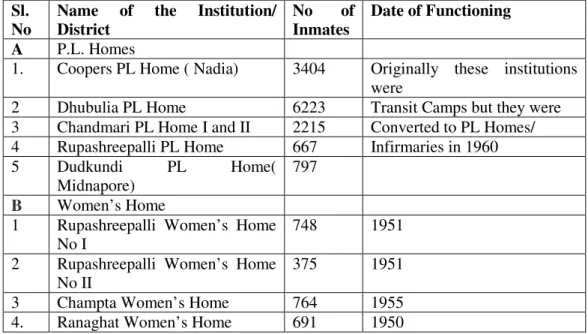
Urban Scheme and Agricultural Scheme of Cooper’s Camp Area
- Committee’s Report, Refugee Relief and Rehabilitation Department, Government of West Bengal, 1981
The experience of refugees of economic development and economic rehabilitation in West Bengal's Cooper Camp is an illustration of the state's responsibility towards refugees - who were seen as a problem. The continued emphasis on the closure of homes and camps across the country speaks to the fact that the "refugee problem" is a thing of the past, while rehabilitation schemes merely encouraged shelter and self-employment. In places like Cooper's, where most of the people are unemployed and women are engaged in making bidis and men in adhoc jobs like carpentry, it remains a distant dream of Coopers to turn into an "industrial town".
On the other hand, both Bimala and Kanaka said they have heard and are aware that one day they may be forced to give up the camp land for development purposes. Recently, the local government with the help of the central government has proposed to set up a school in the vacant area of the Women's Camp. In any case, if the school project goes ahead, she would at least demand that the local residents of the camps be part of the day-to-day decision-making process.
The 1989 Inquiry Committee Report on the Problems of Refugee Camps and Homes in West Bengal insisted that rehabilitable families in both these PL camps should be rehabilitated insitu or at Ranaghat G.S. The report mentioned that the local MLA is not in favor of ending it. The transition of the nation state to the market state has been marked more by ensuring GDP than by addressing livelihood issues.
Securing livelihoods in areas such as Cooper's camp is essential, where most of the female workforce is involved in rolling bidi (local tobacco leaves). Coopers Camp residents reported that women barely managed to earn 500 bidis after doing their household chores; earn Rs 17 per day. Carter, Donald 1994 “The Art of the State: Difference and Other Abstractions” Journal of Historical Sociology 7(I): 73-102.
Relief and Rehabilitation of Displaced Persons in West Bengal Report 1957, Directorate of Relief and Rehabilitation in the Government of West Bengal. A Master Plan for Economic Rehabilitation of Displaced Persons in West Bengal Refugee Relief and Rehabilitation Dept, July 1973. Report of the Working Group on Residual Problem on Rehabilitation in West Bengal, Government of India, Ministry of Supply and Rehabilitation, Department of Rehabilitation, March 1976.
